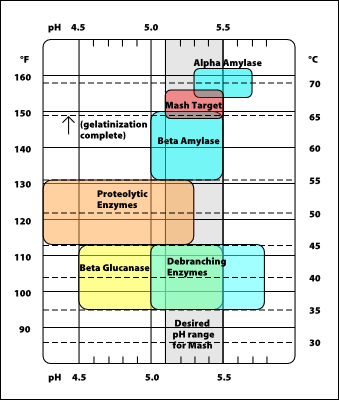- Joined
- Nov 26, 2006
- Messages
- 3,996
- Reaction score
- 94
I'm wondering what the useful range is for mash temps. I know 152F is sort of the standard baseline and you can go higher or lower. What I'm trying to figure out is how much higher you can go, and how much lower. Of course, the sky is the limit from a theoretical standpoint, but practically speaking, for the thinnest and the maltiest beers around, what's the range?
Of course, for decoctions, you'll be boiling the liquor, but for just a regular mashout, assuming one or maybe two steps, might you go all the way up to just below the mashout temp (170 degrees)? Would you mash at 168?
And how low would you go?
Of course, for decoctions, you'll be boiling the liquor, but for just a regular mashout, assuming one or maybe two steps, might you go all the way up to just below the mashout temp (170 degrees)? Would you mash at 168?
And how low would you go?












































![Craft A Brew - Safale BE-256 Yeast - Fermentis - Belgian Ale Dry Yeast - For Belgian & Strong Ales - Ingredients for Home Brewing - Beer Making Supplies - [3 Pack]](https://m.media-amazon.com/images/I/51bcKEwQmWL._SL500_.jpg)













